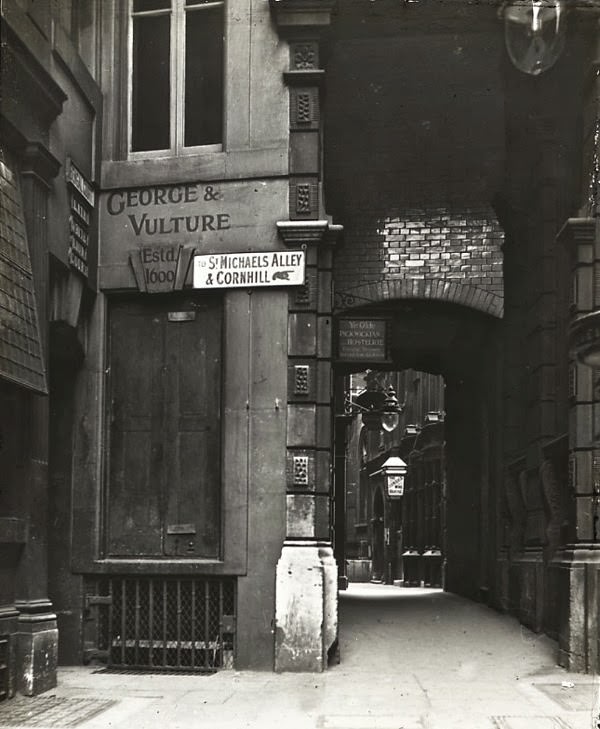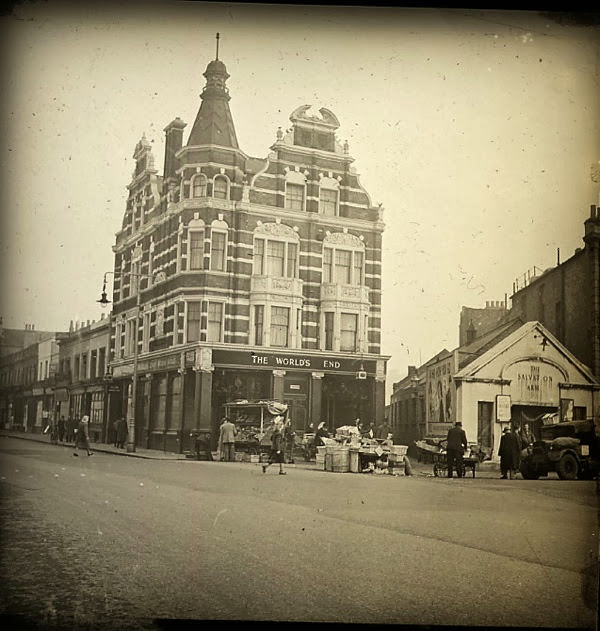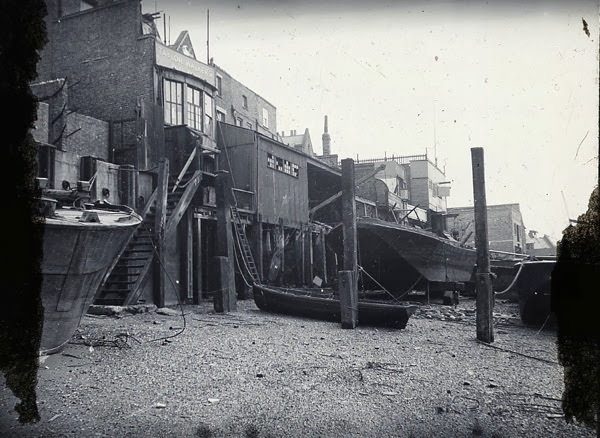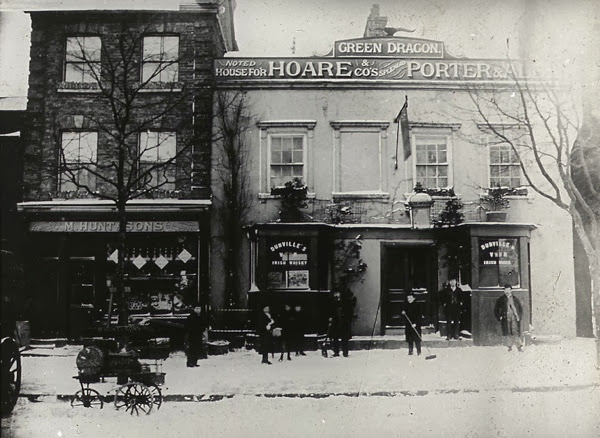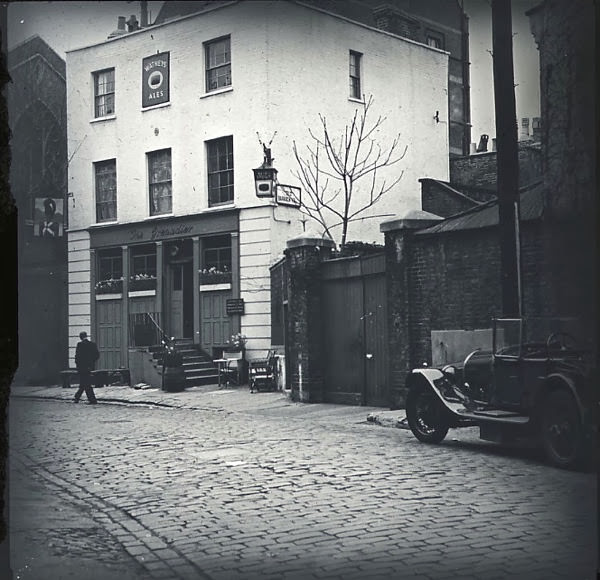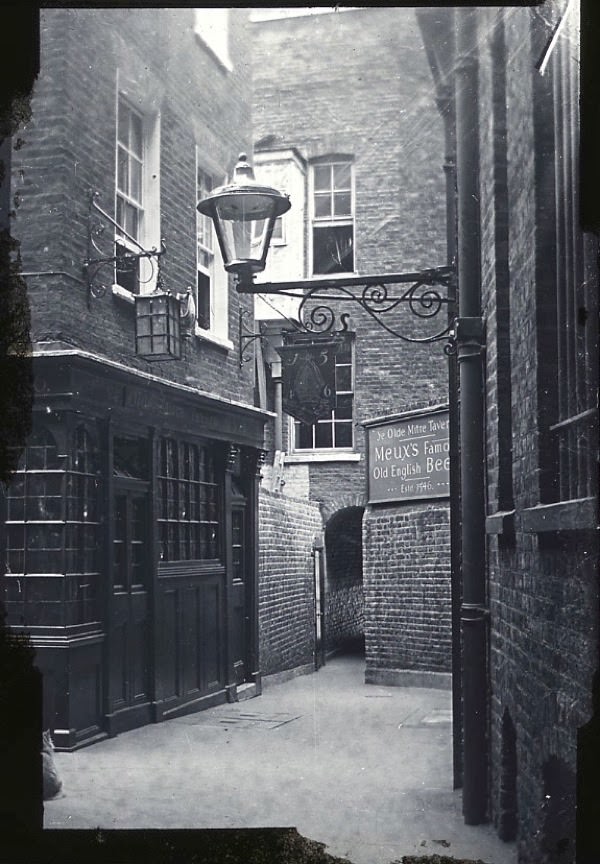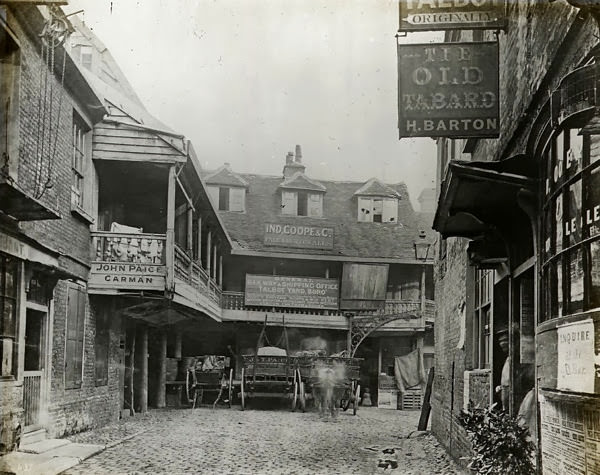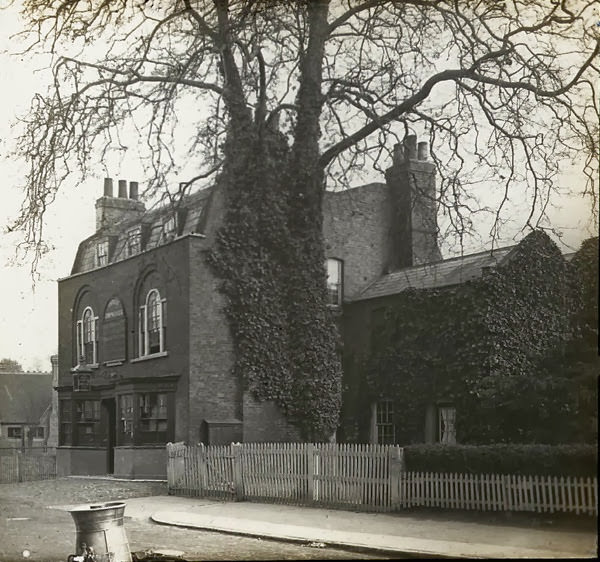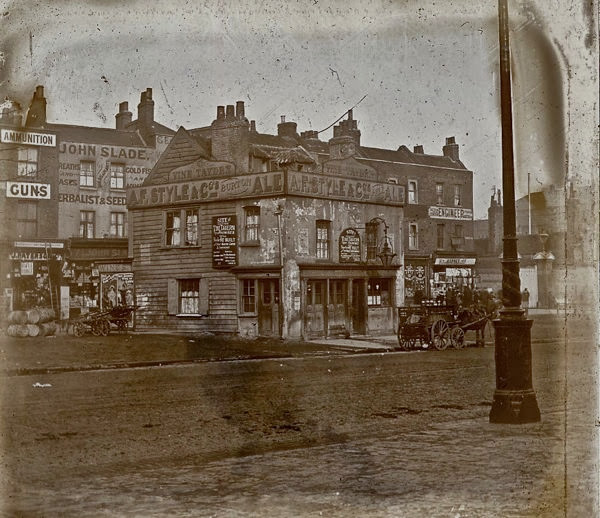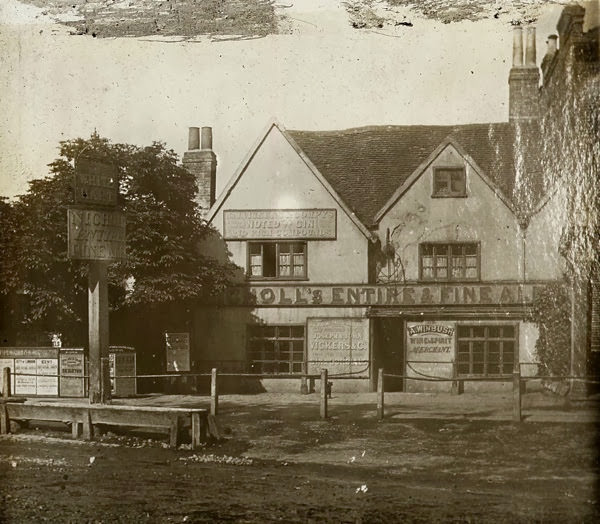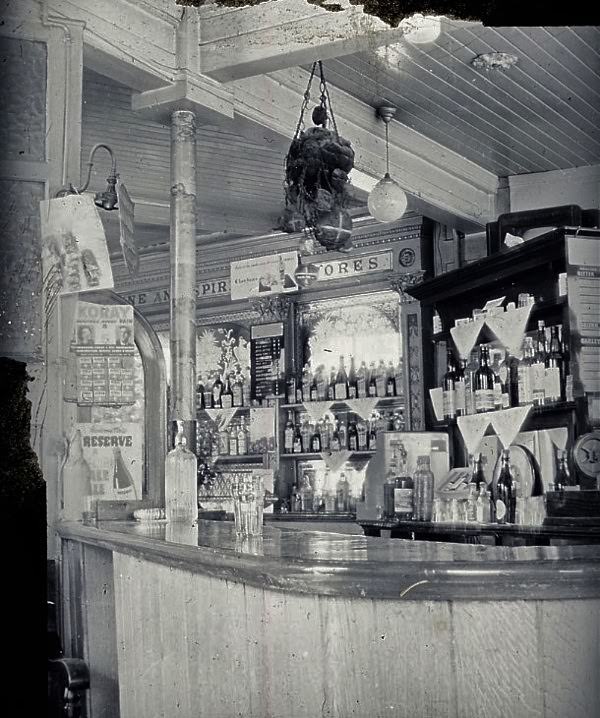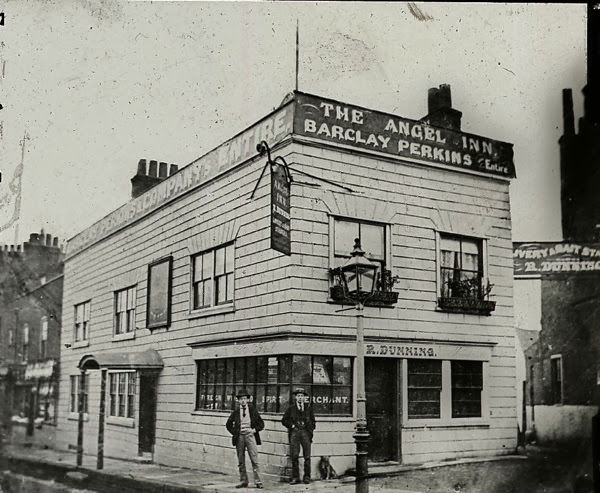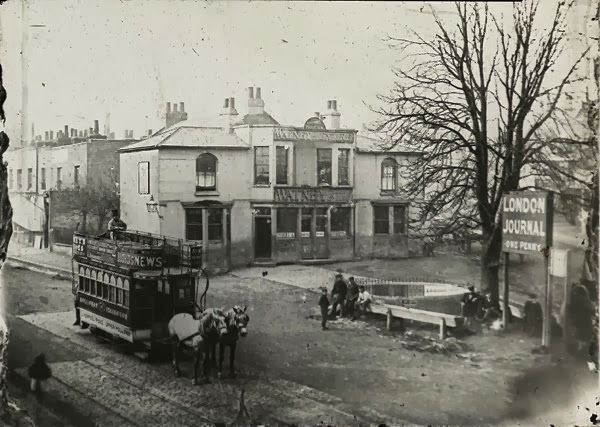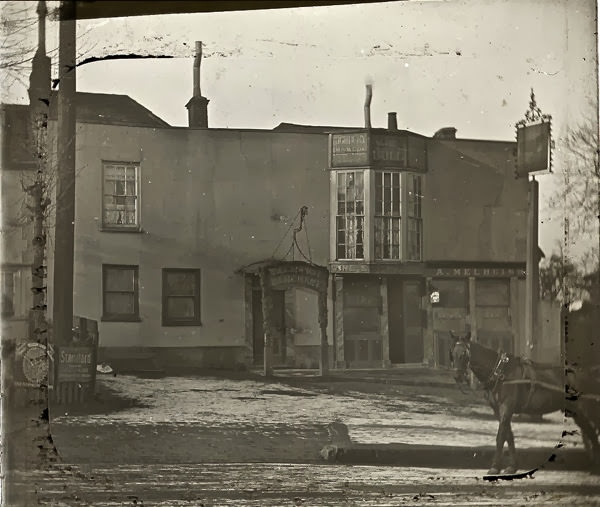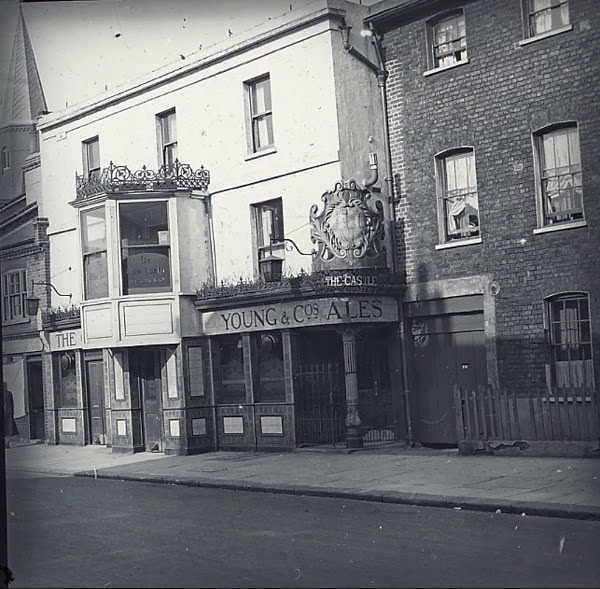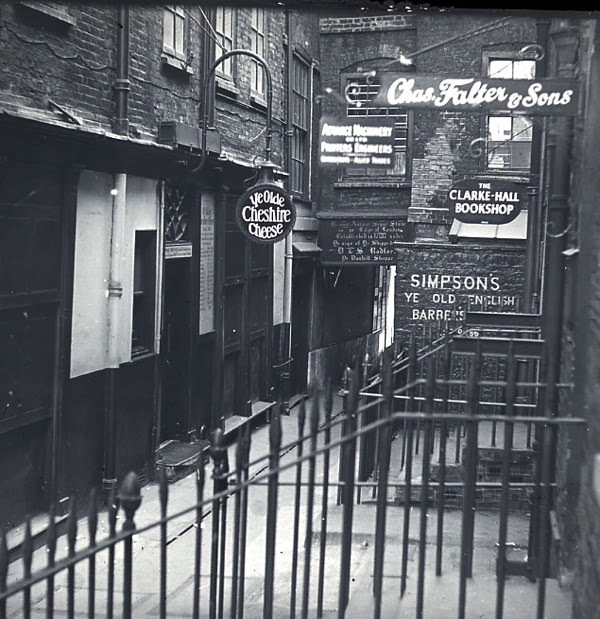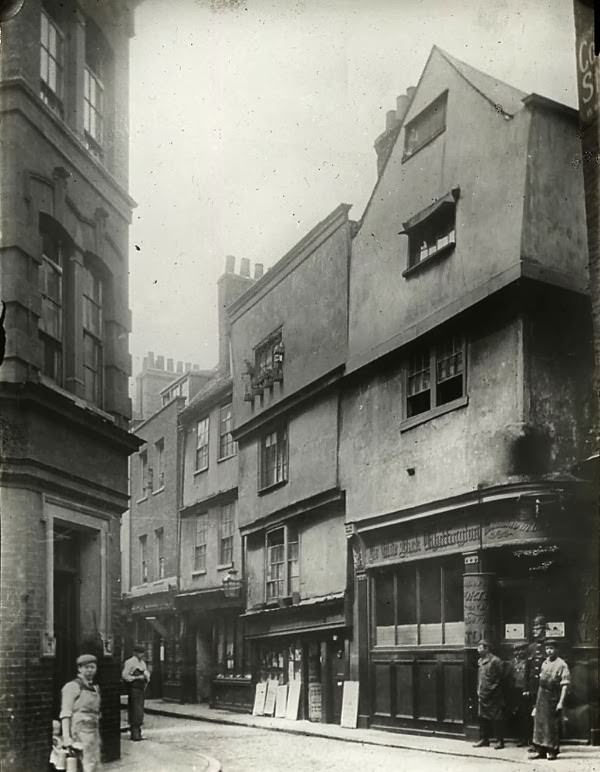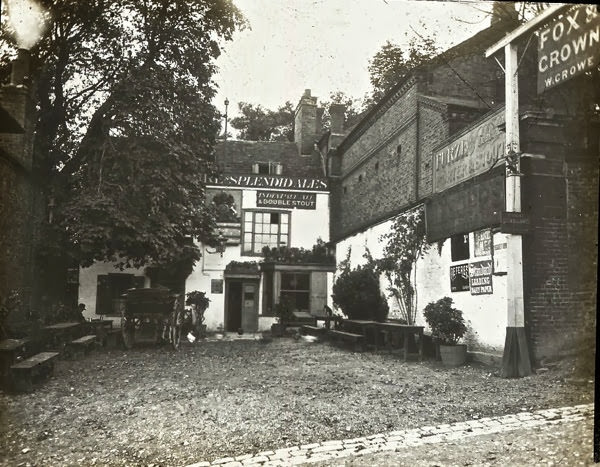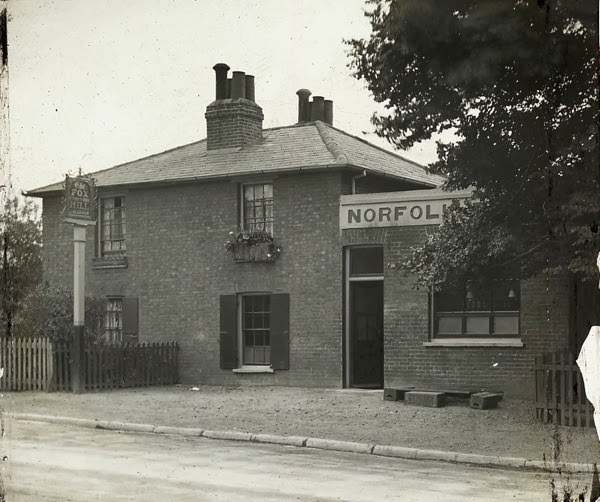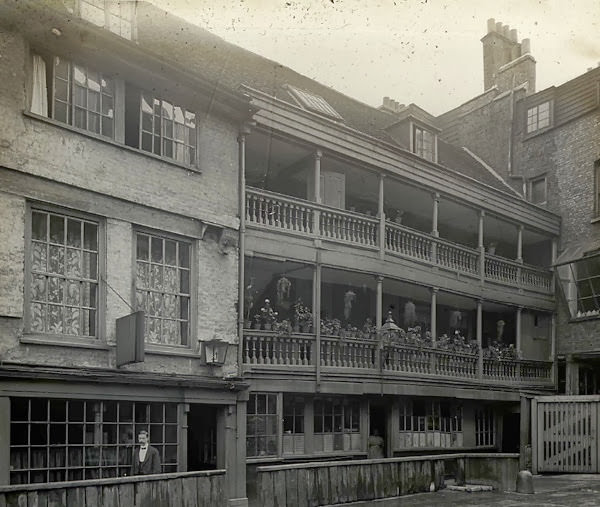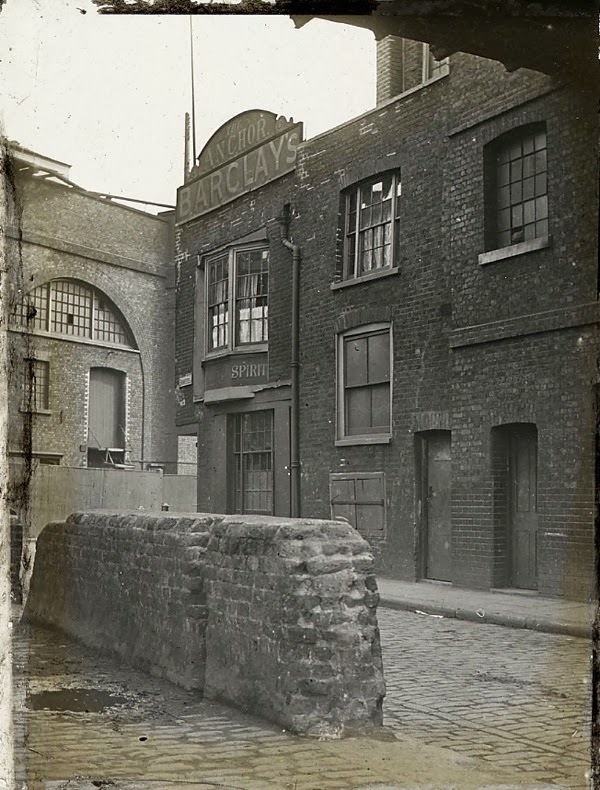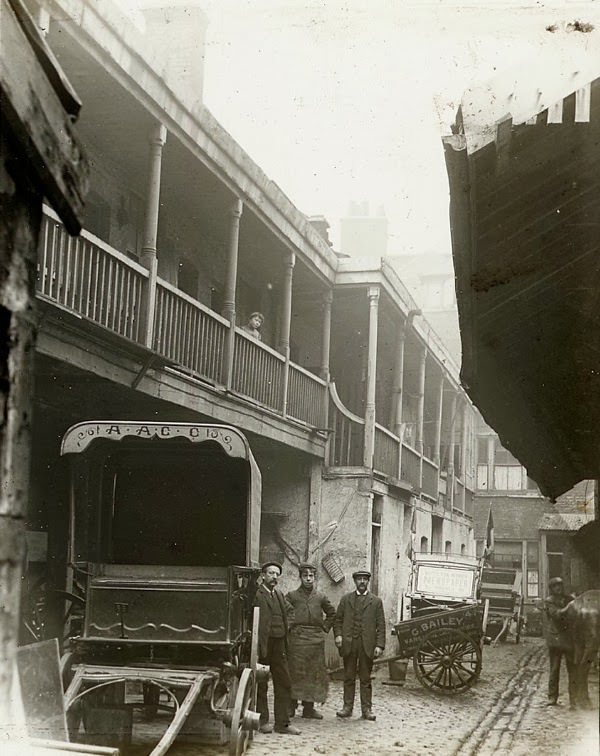In the early 1900s, the public house was a cornerstone of daily life for many Londoners. These establishments, commonly known as pubs, served as social centers in neighborhoods across the city, from the bustling East End to the quieter residential streets.
The appearance of many London pubs from this era was a holdover from the late Victorian “gin palace” style. Exteriors were often grand and ornate, designed to be inviting and impressive. They featured polished granite pillars, large gas lanterns mounted by the doors, and elaborate tile work on the facades. The pub’s name was typically displayed in large, gilded letters on the windows or on a large sign hanging above the street.
Inside, the pubs were designed for both spectacle and privacy. The main bar area was dominated by a long, polished wooden counter, often made of mahogany. Behind the bar, a large, ornate back bar featured mirrors etched with floral patterns or advertisements for breweries. This glassware was not only decorative but also multiplied the light from the gas lamps, making the interior feel bright and lively.
Read more
A key feature of many pubs in the early 20th century was the division of the interior space. Separate entrances often led to different bars or rooms intended for specific classes of clientele. The Public Bar was the most basic area, with simple wooden benches, sawdust on the floor to absorb spills, and lower prices. The Saloon or Lounge Bar was more comfortably furnished, with carpeted floors, cushioned seating, and a more relaxed atmosphere, attracting a middle-class customer.
For those desiring privacy, many pubs had “snugs” or “jug and bottle” departments. Snugs were small, private rooms with their own access to the bar through a sliding hatch. The “jug and bottle” was a separate entrance and counter where women and children could buy beer to take home without having to enter the male-dominated main bar areas.
The air inside was thick with the smell of wood smoke from the fireplace, stale beer, and tobacco smoke. Gas lighting cast a warm, and sometimes flickering, yellow glow over the patrons. The drinks served were primarily draught ales and porters, drawn directly from barrels kept in the cellar below. Patrons drank from earthenware mugs or glass tankards.
Pubs were often tied to specific breweries, and the signs outside and decorations inside heavily featured the brewery’s brand. The man who ran the pub, the publican or landlord, typically lived with his family in an apartment above the establishment. He was a central figure in the local community, acting as a banker, referee, and confidant for his regular customers. Entertainment was simple and communal; many evenings involved card games, dominoes, darts, and spontaneous sing-alongs, sometimes accompanied by a customer playing the piano in the corner.


